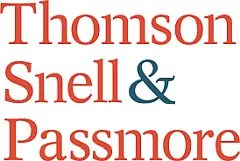Faye Cook, Partner in the Corporate & Commercial team, looks at whether an Employee Ownership Trust is the right decision for your company, in an article for Insider Media.
The Employee Ownership Trust (EOT) regime is fast approaching its tenth anniversary, since it was first introduced under the Finance Act 2014. They have been a hot topic in recent years due to their significant increase in popularity and inception within UK companies.
A freedom of information request submitted to HMRC last year showed that in 2019 a total of 38 companies made a 'clearance application' to HMRC, relating to sales or transfers to an EOT. In 2020, this increased to 100 companies and in 2021, it increased again to 383 companies. A search undertaken at Companies House shows that there are currently over 1000 companies with 'EOT' in their name. It is considered that the impetus behind this growth is due to the significant changes made to Entrepreneurs' Relief (now Business Asset Disposal Relief) in 2020, when the lifetime limit was reduced from £10million to £1million.
EOTs have also been in the news recently following the announcement that, perhaps one of the most famous employee owned companies in the UK, John Lewis, is exploring the possibility of moving away from its 100% employee-owned model.
What is an EOT?
An EOT is type of employee benefit trust. Once the trust has been created under a Trust Deed, it is used to purchase a controlling interest (i.e. more than 50%) of the shares in a company. The trust then holds the shares for the benefit of the employees, who are eligible for annual income tax free bonuses as well as a share in the net transaction proceeds if the business is ever sold in the future. The company funds the EOT from its future profits, and the EOT pays any deferred consideration to the sellers over a period of time, as and when profits become available.
From the sellers' perspective, one of the key benefits of an EOT is that the sale is tax neutral from a capital gains tax (CGT) perspective. In other words, so long as the relevant qualifying conditions are met, the sale of shares will not trigger a CGT liability. This effectively allows sellers to take money off the table, as they would in a traditional trade sale or buyback of shares, but without the hefty tax bill.
The EOT model is also popular as it allows shareholders to sell their business to an entity over which they still have control, on the basis that it is usual practice for sellers to become Trustees of the EOT. For many sellers, this limits the risk-profile of any deferred consideration as they are still actively involved in the day-to-day running of the business.
In addition, EOTs can also really help to promote employee engagement and motivation, and ultimately improve the morale of the company resulting in higher productivity, profitability and staff retention.
Are EOTs too good to be true?
It is little wonder that EOTs have grown in popularity over recent years as awareness and familiarity has increased. However, you can understand why some sellers still query whether they are too good to be true.
The Government actively encourages the EOT business model. However, despite the advantages on-paper, it is important that, from a practical perspective, an EOT is implemented for the right reasons.
In particular, the significant tax benefits should not be the sole reason for proceeding with an EOT. The sellers should also not lose sight of the original principles on which EOTs were created, which was to encourage founders and other shareholders to pass ownership of their company on for the benefit of its employees. In other words, EOTS are a long-term plan, and should not be used as a staging post for a future exit or trade sale.
What happens if you sell the company and end the EOT?
Despite their long-term nature, situations can arise where the trustees of an EOT decide to sell the company. Any third party sale, must be in the interests of the employees, and is therefore likely to arise where the trustees have received an 'offer that they can't refuse'. In order to protect against such circumstances, there is an increasing trend to include anti-embarrassment provisions in the Share Purchase Agreement which enables the original sellers to claw-back a percentage of the uplift if an onward sale happens quickly (i.e. usually between 2-4 years).
In addition, it is vitally important to be aware of any potential tax traps should the company be sold and the EOT ended. From the original seller's perspective, there is a maximum period of two years during which the EOT must continue to meet the 'qualifying conditions' under the EOT legislation. Failure to do so will give rise to a taxable event which means that the sellers are at risk of paying CGT on the original sale price.
Once the seller's risk period has expired, the CGT risk passes to the trustees of the EOT. This means that the CGT tax is essentially 'kicked down the road' and becomes payable by the EOT on any subsequent sale.
As a result, although many aspects of EOTs are attractive, the question of whether they are right for a particular company must be assessed carefully before proceeding. They are best utilised in the context of phased or long-term seller exits, where the succession plan is for the next generation of employees to take over. Otherwise, EOT trustees may find themselves in a difficult situation where a potential tax bill following a sale wipes out any benefit for the employees.
It is therefore important to not lose sight of the fundamental principles on which EOTs were created amidst the excitement of tax savings for the seller, otherwise the tax just becomes someone else's problem to be dealt with later down the line.
The content of this article is intended to provide a general guide to the subject matter. Specialist advice should be sought about your specific circumstances.


